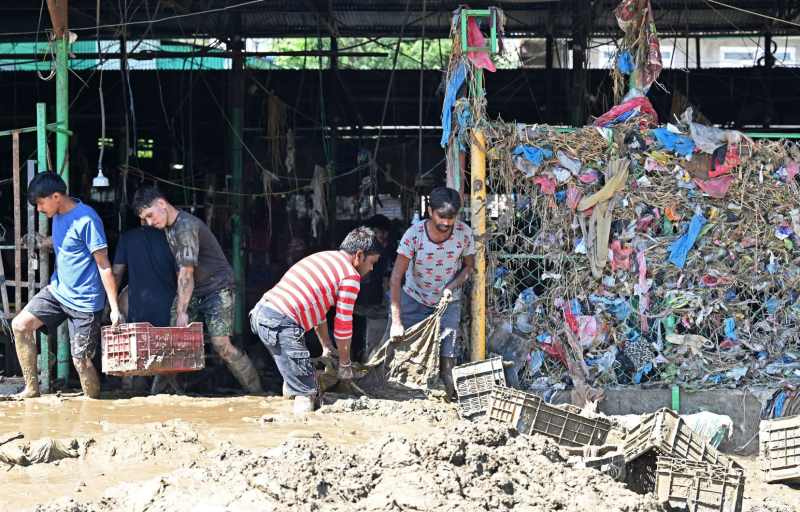
Photo: Prakash Mathema Agence France-Presse Vendors clear mud from a vegetable market in a flood-hit area following heavy monsoon rains in Kathmandu on September 30, 2024.
Anup Ojha – Agence France-Presse in Kathmandu
Published at 8:05 a.m.
- Asia
When water suddenly flooded his Kathmandu slum on Friday night, Indra Prasad Timilsina, 65, and his wife had just enough time to save what was most precious to them: their three cows.
“Everything is gone,” laments the milkman, his feet in the thick brown mud that has seeped into his home. “If you die, nothing matters. But if you survive, then you have to face all the problems.”
The torrential and exceptional rains that have poured down on eastern and central Nepal have flooded several districts of the capital and caused devastating landslides.
The latest, still provisional, report published by the authorities on Monday indicates at least 200 dead, 127 injured, 26 missing and considerable damage, particularly on the entire road network that links Kathmandu to the rest of the small Himalayan country.
200% Deposit Bonus up to €3,000 180% First Deposit Bonus up to $20,000“It's a nightmare,” says Indra Prasad Timilsina, who earns his living selling his milk to his neighbors, most of whom have come from villages in the high mountains in the hope of finding a better life in the capital.
“I have never experienced such extreme flooding in my entire life,” he confides.
The flow of the Bagmati River, which crosses the district of Tripureshwor, has calmed down a little since Friday evening but it remains violent. This is where the milkman has tied up his three cows.
In the long list of everything the flooded river has stolen from him, there are nine bags of animal meal that were meant for them. So, even though he still has some cash left, he is worried.
“If I can’t feed them, they’ll die,” he worries.
Along with hundreds of other families in the neighborhood, Indra Prasad Timilsina had to wait until Sunday for the water level to recede before returning.
“Refugees on our roofs”
They found brown mud covering the floors of their homes and much of what was still inside.
Rather than prepare for the biggest Hindu festival of Dashain, scheduled for next week, most are bailing out the murky water with buckets. Others wash their clothes in plenty of water or dry the few seeds or lentils that are still usable.
A computer science teacher at a local school, Shyam Bihari Mishra was unpleasantly surprised to find his 25 computers submerged in mud. “They are unusable,” he grumbles, “our students will be deprived of education.”
The monsoons from June to September cause death and destruction across South Asia every year. But the number of deadly floods and landslides has increased in recent years.
Scientists say climate change has made these weather events more frequent and intense.
“The impact is further compounded by poor drainage in settlements that have sprung up, construction in flood zones and a lack of reservoirs,” notes the International Centre for Integrated Mountain Development (ICIMOD).
The 29,000 or so slum dwellers in Kathmandu know this.
“This year alone, we have had to take shelter on our roofs several times,” recalls Bishnu Maya Shrestha, 62, 15 of whom have been in Tripureshwor.
“But we did not expect the water to rise this high,” he adds, “this time it submerged all the houses.” He and his family only escaped by cutting the roof of their house to escape the flood…
